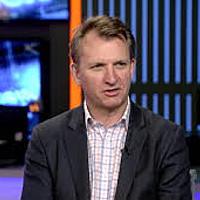Gold: Relief rally, or new bull market?
Strong gold investment flows, as always, have been driven by a loosening of US monetary policy (i.e. with the Fed backing away from its late 2015 plans to raise rates four times this year). Largely reflecting that financial markets have repriced, with a sharp fall in implied Fed Funds rates, real bond yields and the US$, most notably in 1H 2016. All those asset prices are highly correlated with gold. With looser financial market conditions, commercial banking activity has also improved – with a pick-up in real M1 money supply growth.
The key question for gold is the likely evolution of Fed policy and the way that interacts with economic growth and real bond yields. As fig 3 shows, real yields are the key driver of gold price direction. The Fed appears to have made its stance clear – i.e. a ‘looser for longer’ policy in which they let the economy ‘run hot.' Yellen laid out that argument last month (Oct 14th) which was backed up by Fischer (in speeches on Oct 17th & Nov 4th). The rotation of Fed Presidents early next year will also support that policy stance: In January, three hawks (Mester, Rosengren & George) and a dove (Bullard) will be replaced by two hawks and two doves (Harker, Evans, Kaplan, and Kashkari). The overall composition of the Fed will, therefore, become modestly more dovish. Broadly speaking, markets are priced accordingly. The rates market has only priced one and a half hikes between now and the end of next year, including a hike next month.
While the US remains late in its cycle, a ‘looser for longer’ policy should set the stage for a phase of improving US economic momentum. Typically, although not always, phases of improving US economic momentum have been consistent with a move higher in real bond yields.
If correct, then that should bring about a further unwinding of bullish positioning and sentiment in the gold market from multi-year high levels earlier this year. Net speculative LONG positions rose to record highs this summer. A broader analysis of gold investment flow also shows that gold has become a crowded trade: Total investment, including net buying of gold bars, coins, ETPs and OTC gold purchases, was ~540 tons on latest/Q2 data - up 86% Y-o-Y, and back at the highest level since 2010 (fig 8). Investment now accounts for 51% of total demand, up from 20% on average between 2013 and 2015. Given that backdrop, downside risks to gold prices are relatively high. Indeed, even if US real yields work their way lower over coming quarters, there’s still a reasonable case for weaker gold prices, given such bullish positioning. That was the 2013 – 2015 experience, in which gold prices trended lower as bullish positioning unwound (fig 8) despite the downtrend in real yields (fig 3).
[Fig 3.PNG]
[Fig 8.PNG]
Conclusion: There are several near-term, upside risks to the gold price. Chief amongst those risks is a Trump win in the US election. Beyond that, gold is complacently priced, with high levels of bullish sentiment and speculative long positioning. Total investment flows have risen rapidly back to multi-year highs and back to levels consistent with the 2011/2012 gold price peak. That positioning reflects the change in monetary policy language this year, in which the Fed has significantly backed away from tightening. The Fed now clearly favours a looser for longer stance in which the economy can run hot and in which the trend in real yields is likely to be upward. If correct, rising real bond yields should underpin the ongoing bear market in gold.
Written by Harry Colvin, Senior Market Strategist. Contributed by Longview Economics: (VIEW LINK)
3 topics

